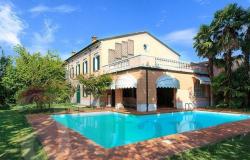 (ANSA) - A major new show exploring the impact of Caravaggio on other artists is gearing up for a sell-out run.
(ANSA) - A major new show exploring the impact of Caravaggio on other artists is gearing up for a sell-out run.
Caravaggio e l'Europa (Caravaggio And Europe) opens to the general public on October 14 but Palazzo Reale, where it runs until February, has already received a record-breaking 64,000 advance bookings.
Subtitled The International Caravaggio School: From Caravaggio To Mattia Preti, the exhibit charts the adoption of the Italian artist's famous chiaroscuro techniques and his fascination with "real life" through works by a number of different artists.
Although boasting around 200 paintings, only 16 will be by Caravaggio himself. The show seeks to pay homage to numerous other artists who were working at the same time or immediately after, encouraging the public to identify Caravaggesque elements, while also appreciating each piece for its own artistic merit.
"Many of those artists defined as 'Caravaggesque' had the misfortune of being unable to exist without him," remarked Vittorio Sgarbi, the show's curator and a former culture undersecretary. "Their identity should instead be that of complete artists. They were not just emulators of Caravaggio, but rather, were so enamoured of his art that they followed him in a kind of cult movement."
The collection includes pieces by the Gentileschis, both father and daughter, the Spanish-born Jusepe de Ribera and Mattia Preti. This will also help set Caravaggio in his context, providing visitors with a more rounded vision of his work. However, despite the stated aim of the exhibit, organizers admitted they had been hoping for more works by Caravaggio himself.
The last Caravaggio show in Palazzo Reale in 1951 belonged to a different era, said Sgarbi, recalling that Caravaggio was not then the international hit with the general public that he is today. Consequently, museums and private collectors have been much more chary about loaning out his works than they once were.
"It's as though they were unmovable frescos," quipped Sgarbi. The show's coordinator, Gilberto Algranti, revealed that Culture Minister Rocco Buttiglione had had to personally intervene on more than one occasion to ensure clearance for the loans.
Among the pieces to make the final line-up are Boy Bitten By A Lizard and Salome With The Head Of St John The Baptist, both on loan from the National Gallery. The Crowning With Thorns, The Madonna Di Loreto and The Capture Of Christ will also be on show.
Caravaggio (1573-1610) was probably the most revolutionary artist of his time. He is best known in modern times for his mastery of chiaroscuro lighting but, perhaps more importantly, was responsible for a ground-breaking move towards naturalism in the 17th century. He abandoned the idealism of the human body and religious experience that had guided Renaissance artists in exchange for more realistic and dramatic atmospheres, mixing street characters with religious subjects.
His naturalist style was adopted by some of the most famous names in art history. Diego Velazquez started out by painting Caravaggesque street scenes in Seville, while Caravaggio's Dutch imitators carried his style north, where it inspired Jan Vermeer.
Orphaned at the age of 11, Caravaggio began his painting career with a four-year apprenticeship in Milan, after which he moved to Rome and began selling paintings through a dealer.
His first major break was a commission to paint for Rome's church of San Luigi dei Francesi, where his dramatic style and realistic naturalism caused public outcry. Despite vehement criticism, Caravaggio's reputation grew. But the artist was troubled with an irascible and violent nature, which surfaced often enough to land him in prison several times even before fleeing Rome.
After fleeing Rome authorities he began an itinerant life, moving between hiding places from Naples to Malta while awaiting papal pardon. He received a pardon shortly before he died in 1610.
Caravaggio e l'Europa runs in Palazzo Reale from October 14 until February 6, after which it moves to the Museum of Liechtenstein in Vienna.



